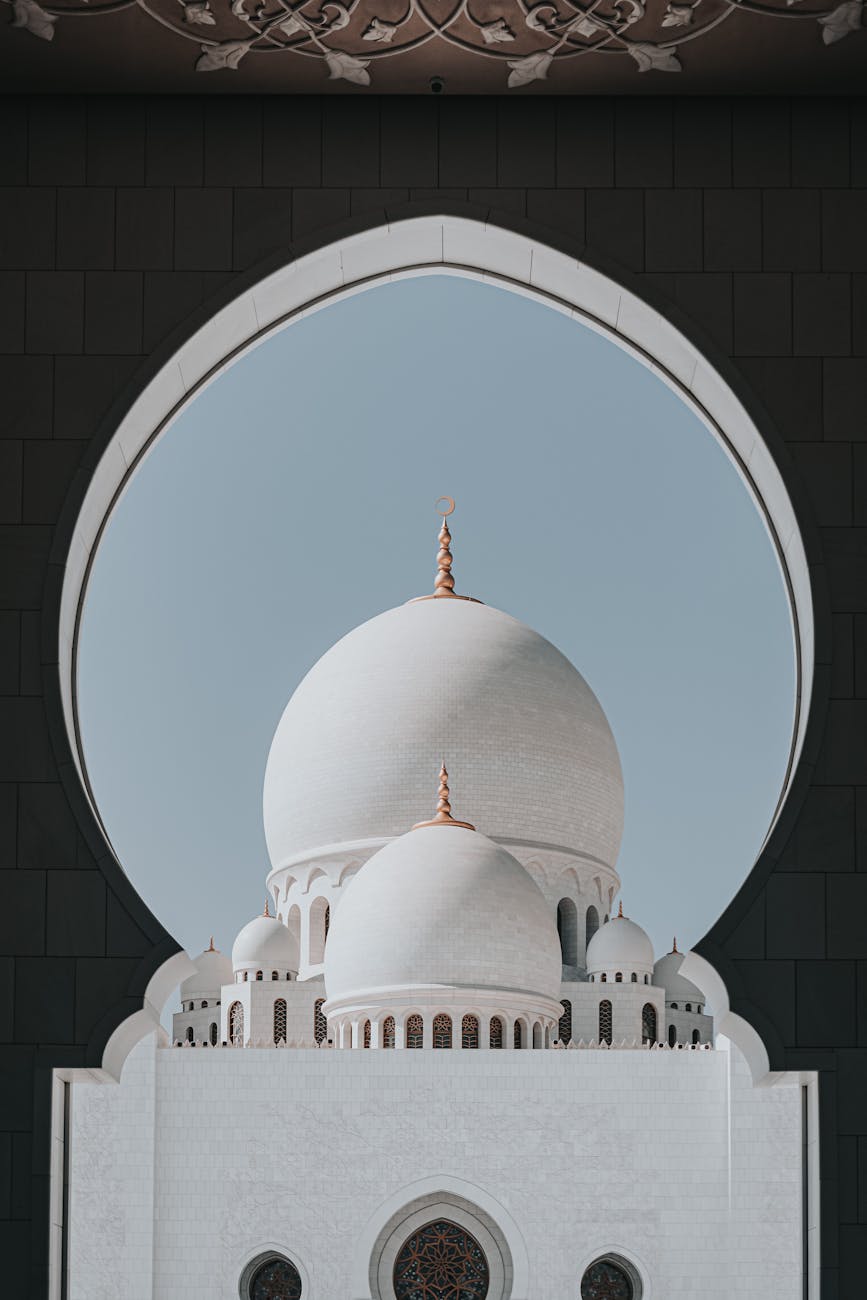Cultural Tourism: Must‑Visit Best Heritage Sites
In today’s fast‑moving UAE, cultural tourism offers a powerful counter‑balance to modernity, allowing visitors and residents alike to experience the emirate’s rich history and diverse heritage. From wind‑tuned desert forts to bustling souqs that echo the sound of barter, the United Arab Emirates hosts a tapestry of heritage sites that reveal the stories behind its rapid development. This guide highlights the finest locations that embody the UAE’s cultural legacy, detailing what makes each site unique, how to plan a visit, and why they matter to the national narrative.
—
Why Heritage Matters to the UAE
The UAE’s Vision 2021 and subsequent Vision 2030 frameworks stress the importance of preserving cultural heritage as a cornerstone of national identity, tourism diversification, and community cohesion. The Ministry of Culture and Knowledge Development (MCKD) underscores that heritage sites serve as educational platforms, fostering a sense of belonging across its multicultural population. Meanwhile, UNESCO and the Dubai Municipality work collaboratively to maintain the authenticity of historic districts, ensuring that preservation efforts align with global best practices.
Preserving heritage isn’t merely about stone and sand—it enhances the economic resilience of the tourism sector, creates jobs, and provides residents with tangible connections to their past. In 2023, the UAE attracted over 19 million tourists, with cultural attractions forming a growing share of visitor itineraries. This trend validates the push to promote lesser‑known sites alongside flagship landmarks such as the Burj Khalifa and the Dubai Frame.
—
Cultural Tourism: Must‑Visit Best Heritage Sites in the UAE
Below is a curated list of the top heritage destinations across the Emirates. Each entry includes historical context, key attractions, visitor information, and practical tips to help travelers make the most of their visit.
1. Al Fahidi Historic District (Al Bastakiya) – Dubai
– History: Established in the late 19th century, Al Fahidi showcases early Dubai’s traditional wind‑tuned architecture, with narrow alleyways and coral‑stone courtyards.
– Must‑See:
– Dubai Museum: Housed within Al Fahidi Fort, it traces Dubai’s evolution from a fishing hamlet to a global metropolis (Dubai Museum, 2023).
– Al Seef District: A modern blend of heritage and contemporary culture, featuring cafés, art galleries, and retail spaces along Dubai Creek.
– Visitor Info:
– Opening Hours: 10 a.m.–7 p.m. (Mon‑Sun)
– Entry Fee: Free
– Best Time to Visit: Early morning or late afternoon to avoid peak crowds and enjoy cooler temperatures.
2. Sheikh Mohammed Centre for Cultural Understanding – Abu Dhabi
– History: Founded in 1990 by the Sheikh Mohammed Centre for Community Relations, it offers cross‑cultural dialogue among locals and expatriates.
– Highlights:
– Cultural Tours: Informative walks detailing Abu Dhabi’s heritage markets, religious sites, and the city’s rapid transformation.
– Shared Meals: Authentic Emirati dinner in a traditional setting to explore local cuisine and etiquette (SMCCU, 2024).
– Visitor Info:
– Opening Hours: 9 a.m.–8 p.m. Mon‑Fri; 9 a.m.–5 p.m. Sat‑Sun
– Entry Fee: Free
3. Al Ain Cultural Landscape – Al Ain (UNESCO World Heritage Site)
– Status: Designated a UNESCO World Heritage Site in 2011 for its archaeological and cultural significance (UNESCO, 2011).
– Key Elements:
– Al Jahili Fort: A 19th‑century fortified structure that offers panoramic views of the desert (Al Jahili Fort, 2023).
– Al Ain Oasis: A man‑made oasis irrigated by an ancient falaj system—an exceptional example of traditional water‑storage technology.
– Bir Huma Oasis: A tranquil area featuring historic irrigation channels and a 400‑year‑old date palm forest (DCT, 2023).
– Visitor Info:
– Opening Hours: 7 a.m.–5 p.m. (Mon‑Sun)
– Entry Fees: 20 AED for Al Jahili Fort; free for Al Ain Oasis
– Recommended Gear: Comfortable walking shoes, sunscreen, and a water bottle.
4. Jumeirah Mosque – Dubai (Muslim Heritage)
– Context: One of Dubai’s most iconic religious sites, built in 1929. Open to non‑Muslim visitors for guided tours to promote inter‑faith understanding (Dubai Municipality, 2024).
– Highlights:
– Guided Tours: Offer an inside look at Islamic architecture, calligraphy, and the role of the mosque within Dubai’s community.
– Cultural Exchange: Visitors can experience traditional Arabic hospitality and learn about prayer rituals.
– Visitor Info:
– Opening Hours: 8 a.m.–6 p.m. (Mon‑Fri); 8 a.m.–4 p.m. (Sat‑Sun)
– Entry Fee: Free (but guide services available for a fee)
– Dress Code: Modest clothing—long sleeves, closed shoes, and for women, a headscarf (provided by the mosque).
5. Al Shindagha Heritage Centre – Dubai
– Background: Established in 2004, this centre documents the social history of Dubai, preserving archival material from the early 1900s (Dubai Municipality, 2023).
– Key Attractions:
– Archival Rooms: Contain photographs, manuscripts, and artifacts related to Dubai’s pre-oil era.
– Interactive Exhibits: Digital storytelling on pearl diving, the date trade, and traditional crafts.
– Visitor Info:
– Opening Hours: 10 a.m.–5 p.m. (Mon‑Fri); 10 a.m.–2 p.m. (Sat‑Sun)
– Entry Fee: Free
6. Fujairah Fort – Fujairah
– Historical Significance: The oldest fort in the UAE, constructed in 1818 to defend the coastal trade routes (Fujairah Cultural Heritage & Tourism, 2023).
– Highlights:
– Fort Architecture: Traditional mud‑brick walls and gun‑ports illustrate early maritime defense mechanisms.
– Museum Rooms: Exhibits on the fort’s history, local fishing, and pearl diving cultures.
– Visitor Info:
– Opening Hours: 10 a.m.–4 p.m. (Mon‑Fri); 10 a.m.–2 p.m. (Sat‑Sun)
– Entry Fee: 10 AED
– Accessibility: Limited elevators; best suited for older pedestrians.
7. Heritage Trail – Sharjah (Al-Qasba and Sharjah Fort)
– Sharkah Fort: Built in 1818, it once housed the Sharjah emir’s residence and served as the emirate’s administrative hub (Sharjah Municipality, 2023).
– Al-Qasba: An evolving cultural district that blends heritage with art installations, live performances, and the iconic canal.
– Activities:
– Walking Tour: Guided visits to Sharjah Fort’s museum, and a boat ride along Al-Qasba Channel.
– Art Exhibitions: Monthly showcases featuring Emirati artists and traditional crafts.
– Visitor Info:
– Opening Hours: 9 a.m.–9 p.m. (Mon‑Sun)
– Entry Fees: 50 AED for Sharjah Fort museum entry; Al-Qasba events vary.
8. Ras Al Khaimah’s Dhayah Fort – RAK
– Context: The fort’s 18th‑century limestone walls dominated a strategic mountain pass, guarding trade routes to the Indian Ocean (RAK Tourism, 2022).
– Highlights:
– Scenic Overpasses: Panoramic views of the Hajar Mountains and the Arabian Gulf from the fort’s elevated position.
– Exhibit Rooms: Display artifacts related to RAK’s regional trade, pearling, and traditional building techniques.
– Visitor Info:
– Opening Hours: 9 a.m.–4 p.m. (Mon‑Fri); 9 a.m.–2 p.m. (Sat‑Sun)
– Entry Fee: 15 AED
– Travel Tip: Rent a car or use a guided tour service; the fort is located 60 km north of the RAK city center.
9. Al Ain Zoo and Al Jahili Gardens – Al Ain
– Cultural Relevance: While Al Ain Zoo showcases the region’s biodiversity, the adjoining Al Jahili Gardens reflect traditional desert landscaping and public space design (DCT, 2024).
– Visitor Highlights:
– Al Jahili Gardens: 33,000 m² of curated plant life offering a contrast between native Arabian flora and cultivated species.
– Cultural Displays: Informational panels illustrate the art of desert gardening, falaj irrigation, and cultural practices around date palms.
– Visitor Info:
– Zoo Opening Hours: 8 a.m.–6 p.m. (Mon‑Sun)
– Zoo Entry Fee: 80 AED
– Garden Access: Free
—
Planning Your Cultural Heritage Trip
1. Timing Your Visits
– Weather Considerations: Between October and April, temperatures are mild (20–25 °C), making heritage sites more comfortable to explore. Summer monsoon months (June–September) may prompt site closures.
– Peak vs. Off‑Season: Visiting during weekdays or early mornings reduces crowds. Tourist-friendly sites such as Al Fahidi Museum and Sharjah Fort have flexible hours enabling late‑afternoon visits.
2. Transportation & Accessibility
– Public Transit: Dubai Metro’s Green Line connects to Al Fahidi and Dubai Creek; Sharjah’s Metro extension reaches Sharjah Fort. Abu Dhabi’s Tram system links major cultural hubs to The Louvre and Emirates Palace.
– Ride‑Share & Taxis: Widely available, especially for remote sites like RAK’s Dhayah Fort or Fujairah Fort. The government’s “RTA” (Roads and Transport Authority) ensures reliable ride‑sharing partnerships.
– Accessibility: While many historic districts have modern pathways, some heritage forts may lack full accessibility. Plan accordingly based on mobility needs.
3. Guided Tours vs. Self‑Exploration
– Guided Tours: Recommended for sites with intricate histories—Dubai Museum, Al Ain Cultural Landscape, and Fujairah Fort. Guides provide context that enhances understanding.
– Self‑Exploration: Sites like Al Fahidi Historic District, Al Shindagha, and Al Ain Oasis are walkable and amenable to self‑guided visits. Interactive displays and interpretive signs assist learning.
4. Dress Code & Etiquette
– Modest Dress: Visitors to religious sites such as Jumeirah Mosque should wear long trousers or skirts, sleeved top and sleeves, and optionally bring a scarf. For other heritage sites, visitors can wear light, breathable attire.
– Photography: Most heritage sites allow photography, but be mindful of cultural sensitivities—avoid taking pictures inside places of worship or of people without permission.
5. Cultural and Practical Safety Tips
– Travel Insurance: Consider coverage that includes cultural site visits; ensure you’re insured for any fall hazards or travel disruptions.
– Health Precautions: Carry hand sanitizer, wear sunscreen, and stay hydrated, particularly when walking in open sunlight.
– Legal Compliance: Respect local laws—do not pick plants or relics, refrain from littering, and follow the signage within heritage zones.
—
The Future of UAE Cultural Tourism
The UAE’s commitment to preserving cultural heritage is reflected in strategic initiatives such as the “Cultural Heritage Development Programme” (CHDP) launched by the MCKD in 2021. The programme focuses on:
– Digitization: Creating digital archives and 3D virtual reconstructions of historic sites.
– Community Involvement: Engaging local artisans, storytellers, and historians in the conservation and presentation of heritage sites.
– Sustainability: Implementing eco‑friendly visitor management to reduce environmental footprints.
These measures help maintain a vibrant cultural sector that resonates with younger generations while still appealing to international audiences. Indeed, the surge in cultural tourism is expected to rise by 5‑7% annually through 2030, reinforcing the UAE’s position as a leader in heritage‑based tourism.
—
Final Thoughts
Cultural tourism in the UAE offers more than mere sightseeing; it is an immersive educational experience that bridges the past and present. Whether you wander through the wind‑tuned lanes of Al Fahidi, marvel at the architectural sophistication of Sharjah Fort, or trace the water‑conserving falaj system of the Al Ain Oasis, each experience enriches your understanding of Emirati culture and resilience. For visitors planning a purposeful journey, the sites listed above provide a roadmap to the UAE’s authentic heritage, ensuring that your trip not only captures iconic landmarks but also the stories that shape the nation’s identity.
By embracing and supporting these heritage destinations, residents, expats, and tourists alike contribute to a living legacy that promises to endure for generations to come.









